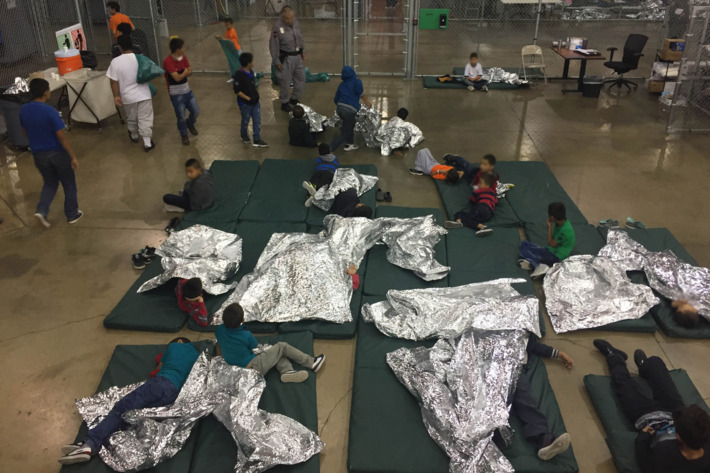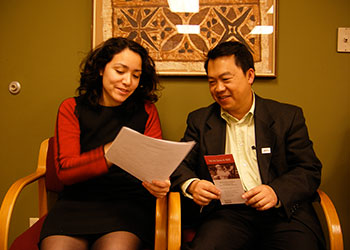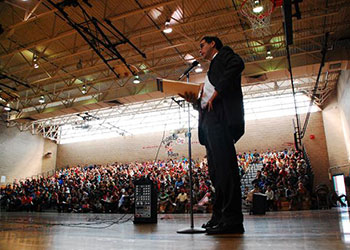News > Fact Sheets
Family Separation Fact sheet
Posted on Jun 18 2018

IMPORTANT NOTICE: This fact sheet is now outdated. As of August 13, see Facts About Family Separation for Asylum Seekers for more current information.
In April, President Trump directed that children be taken away from immigrant families who cross the U.S. border without permission. Their parents are charged with illegal entry, a misdemeanor offense in federal courts, and processed in mass trials. Usually, they plead guilty and are sentenced to time served and then turned over to immigration authorities. Parents are often discouraged from pursuing their asylum claims, and sometimes told the only way to be reunited with their children is to agree to deportation. Some parents are deported immediately, sometimes without their children.
UPDATED ON 7/5/18: (If you have updates or corrections to this fact sheet, please email communications@ilcm.org)
WHO
- 11,500 children were detained by U.S. immigration authorities, as of the end of May.
- 2,322 children were taken away from their parents from April 19-June 20.
- Most of the children come from Central America.
- Many of them are so-called “tender age” children, under the age of 10.
- Some of the children—at least hundreds, though the U.S. government will not say exactly how many—are younger than 4 years old, including some infants.
- Most, but not all, of the children crossed the border with their parents at a place other than a legal checkpoint. Some of the families, however, crossed at a legal checkpoint and their children were still taken away.
WHAT
- The law does NOT require family separation. The law does NOT require detention for parents or for children. Workable alternatives exist.
- On June 26, a federal judge ordered the administration to reunite all separated families within 30 days, and all children under the age of 5 within 14 days.
- The Trump administration’s response is to say it will hold parents and children in detention together—indefinitely.
- The Flores settlement prescribes how children are treated in detention, and sets a limit of 20 days on holding children in detention with their parents. The Flores settlement also orders the “least restrictive alternative” for children.
- “Catch and release” mischaracterizes the law. It means releasing immigrants to await their court hearing, just as people charged with speeding or burglary or any other offense are released to await their court hearings. Most people show up for their court hearings, in immigration, traffic, or criminal cases. Some people do not.
WHEN
- The president and attorney general ordered this policy change in April.
- Presidents Bush and Obama both considered the possibility of family separation and rejected it as cruel and un-American.
- After a wave of public revulsion and protest, Trump officially changed the family separation policy on June 20, but the order’s effect and intent were unclear.
- A federal judge ordered all children reunited with their parents by July 25.
WHERE
- The children are put in “shelters” that look like jails and include a converted WalMart warehouse, wire cages like dog kennels, and a tent city in Texas.
- Some are transferred across the country to more than 100 shelters in 17 states. Some are placed in foster homes or with relatives.
- The average length of a child’s stay in immigration detention is between 55 and 60 days.
- Three military bases in Texas and Arkansas are being readied to receive up to 20,000 children.
- When children are in detention facilities in the community, these facilities must meet state standards for child care. Facilities on federal land do not need to meet these standards.
WHY
- President Trump chose to jail children as a bargaining chip to push Congress to approve his anti-immigrant agenda. This was his choice, and his alone. (It didn’t work.)
- Trump also said he was doing this to deter immigrants from “pouring across the border.” While numbers are higher now than they were in 2017, they are about the same as in 2016. Moreover, the total number of border crossings is at a historic low.
HOW
- Congress could pass a law ordering an end to family separation and to jailing migrant children.
- The Keep Families Together Act (S. 3036) would stop the separation of children from their families.
- Republicans have also proposed a “skinny bill” to deal with families at the border. This bill would allow indefinite detention of children with their parents and would end child protection rules established under the Flores settlement. Clearly, that is not a solution to anything.
- For more on what you can do, see Family separation at the border: How you can help




